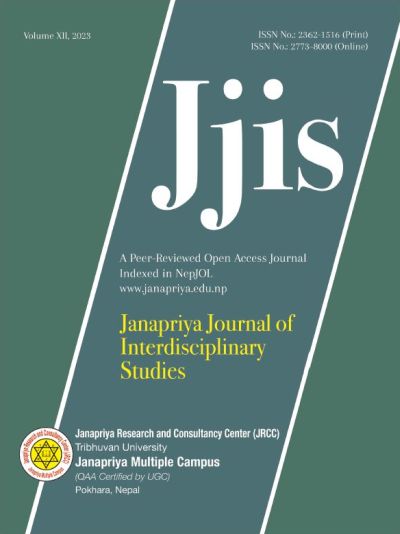Employees’ Intrinsic Job Satisfaction and Organizational Commitment in Pokhara Metropolitan City
DOI:
https://doi.org/10.3126/jjis.v12i1.62213Keywords:
Affective commitment, continuance commitment, job satisfaction, normative commitment, organizational commitmentAbstract
Intrinsic factors are core inspirable elements to personnel for work harder. While intrinsic factors exist in the workplace employees feel better job satisfaction and motivation. Therefore, the aims of this study are to observe the influence of JS on organizational commitment among commercial banking personnel in Pokhara. The respondents of the study were non-managerial commercial banking staff. Data were collected from 209 (102 males, and 107 females) sample respondents using convenience sampling through self-structured questionnaires. Intrinsic dimensions of JS were employed in this study. Likewise, affective, continuance, and normative commitment were implied dimensions of the study. Different statistical tools namely; average mean, SD, independent sample t-test, one-way ANOVA correlation, and multiple regression were employed. The study found responsibility, as denoted by the intrinsic dimension, was the most powerful predictor of JS and affective commitment was the major factor of OC. However, the result indicated that the normative commitment was least observed. The correlation between predictor variables dimensions of JS, and OC were found to be positive, and significant. The outcomes of the regression showed that the two factors explained. The findings indicated that intrinsic JS leads to the OC of non-managerial banking employees in Pokhara Metropolis.
Downloads
Downloads
Published
How to Cite
Issue
Section
License
Copyright (c) 2023 The Author(s)

This work is licensed under a Creative Commons Attribution-NonCommercial 4.0 International License.




